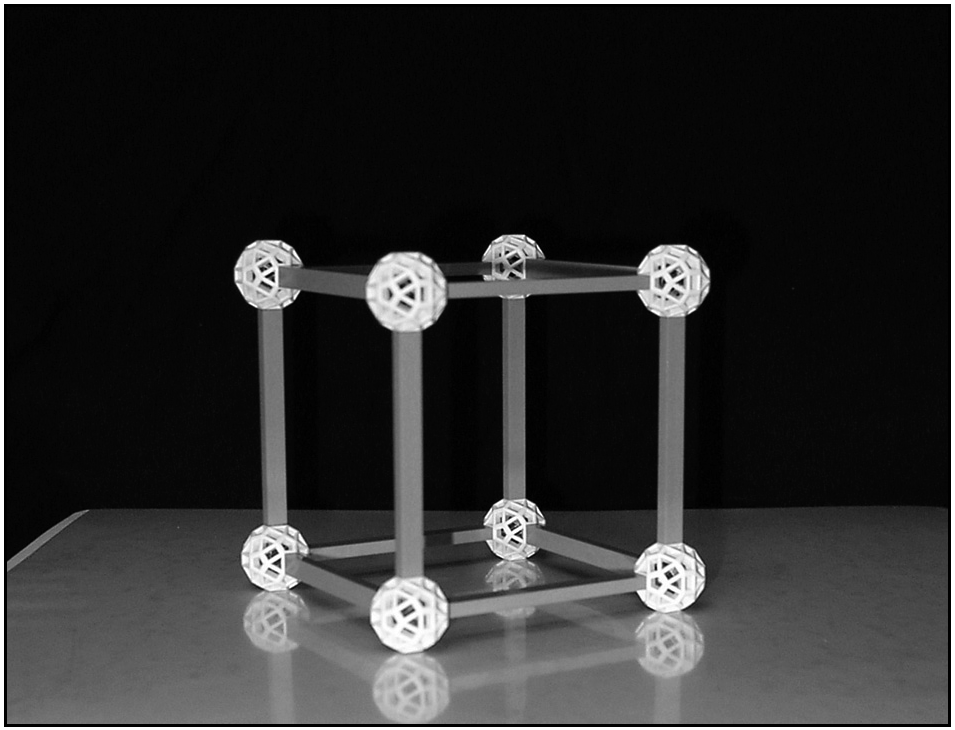Geometry: Polyhedra
Polyhedra
A polyhedron is a three-dimensional version of a polygon. Recall that a polygon is the two-dimensional region that is bounded by line segments. When you move up in dimension, planes play the role of line segments. A polyhedron is a solid bounded by planar polygonal regions. The polygons that bound the polyhedron are called the faces of the polyhedron, and the edges of the polygon form the edges of the polyhedron. The vertices of the polygons are the vertices of the polyhedron. The prisms and pyramids discussed earlier are special types of polyhedra.
The prisms and pyramids discussed earlier are special types of polyhedra. Prisms have quadrilateral lateral surfaces and pyramids have triangular lateral faces. In general, a polyhedron can have any kind of polygon for any of its faces. They can be as wild as you can imagine them. But it turns out that your imagination is not as wild as you might think it is.
Leonhard Euler, a famous mathematician, discovered a special relationship between the number of vertices, edges, and faces that every polyhedron satisfies. That includes the biggest and the wildest polyhedron that the biggest and the wildest person can imagine. If you let V represent the number of vertices of a polyhedron, E stand for the number of edges of the polyhedron, and F denote the number of faces of the polyhedron, then V + F = E + 2. Let's take a simple polyhedron and see if it works.
- Example 2: Verify Euler's formula for the cube shown in Figure 21.6.

Figure 21.6A cube.
- Solution: A cube has 8 vertices, 6 faces, and 12 edges. Let's see if it works: 8 + 6 = 12 + 2. Yep, it works!
Excerpted from The Complete Idiot's Guide to Geometry © 2004 by Denise Szecsei, Ph.D.. All rights reserved including the right of reproduction in whole or in part in any form. Used by arrangement with Alpha Books, a member of Penguin Group (USA) Inc.
To order this book direct from the publisher, visit the Penguin USA website or call 1-800-253-6476. You can also purchase this book at Amazon.com and Barnes & Noble.







